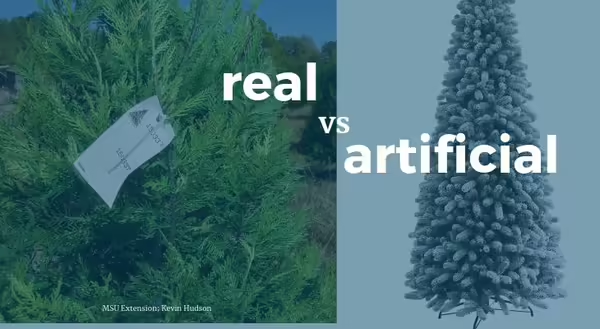
Growing up, a family tradition was going out to the Christmas tree farm to find that perfect tree. As a child, it was fun going out to pick our tree, cut it and then watch it hauled to the barn on a sled, shook for all its worth to get the dead needles out, and finally bundled up on our car ready for home.
My wife had an altogether different experience growing up. She would help her mother haul a fake tree out of the crawl space every year. The family faux Christmas tree had been used for two prior generations.
Once my wife and I were married, I grew accustomed to this new tradition. Hauling the family tree out of the basement on Thanksgiving and putting it back after the New Year. With three generations of use, the now sad looking family tree had come to be called the Grover Tree because the limbs were so worn and bare they hung off the trunk like the spindly arms of the Sesame Street character Grover.
To hold up the limbs, Grover's trunk was mostly tape and rubber bands. Fake needles fell out at an exponential rate. It wouldn't be long until the limbs were soon bare wires. We still did a great job masking much of this and decorations helped make our family tree shine. However, this past year it was decided to retire old Grover.
There has been much debate over which Christmas tradition is more sustainable- cut Christmas trees or fake Christmas trees. Many in support of cut trees balk at the use of synthetics (oil) to create a replica of something natural. While on the other side, fake Christmas tree groups nearly faint at the sight of a perfectly good evergreen being chopped down. Not to mention all the inputs such as fertilizers, pesticides, irrigation, and labor it takes to grow those trees.
So what does the research say? Which type of Christmas tree is more sustainable? The answer depends on a few variables such as how long do you use a fake tree or how far you drive to get your cut tree. However, when researchers looked at the overall carbon footprint of real versus cut Christmas trees, they saw both were about even.
Let me throw in a third option – living Christmas trees. A living Christmas tree is a potted evergreen, raised by a nursery or tree farm. These come with an entirely different set of care guidelines. According to Bert Cregg an author of the popular blog The Garden Professors, "When [living Christmas] trees are brought indoors, they begin to lose cold hardiness almost immediately; so the longer trees are indoors, the more likely they will suffer cold damage when you bring them back outside."
So what type of tree did we settle to get? Turns out a friend was getting rid of her fake tree because she was moving and the built-in lights no longer worked. We happily took the tree off her hands and strung up new lights. Hopefully, this tree lasts for generations to come before it too joins good old Grover in the landfill.
Good Growing Tip: After the holiday, Bert Cregg recommends storing your living Christmas tree in a protected, unheated space. Water thoroughly and wait until spring to plant.